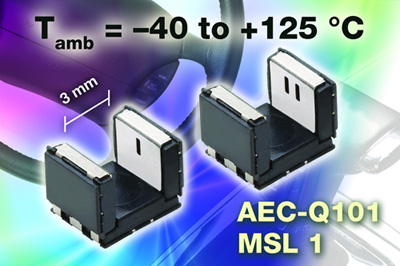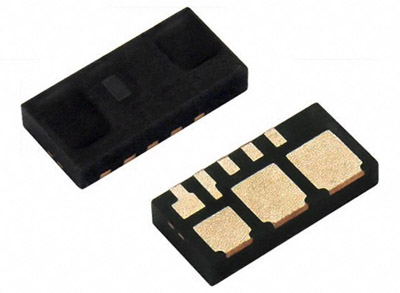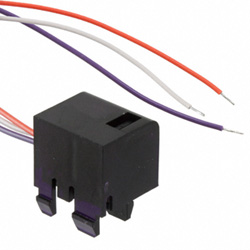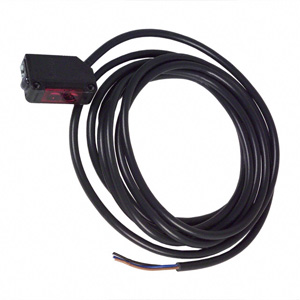New and Notable Optical Sensor Solutions
投稿人:电子产品
2014-01-09
Sometimes you just cannot use a traditional sensor. When your design involves cabling challenges, noise filtering issues, electrically unfriendly conditions, or other harsh or dangerous environments, or even when you are trying to deal with how large the sensor can be to work in a tight space, taken together these issues may be enough to steer you away from the traditional solution. In these cases, and where instrumenting a large area with multiple sensors within a reasonable budget is the goal, engineers would do well to consider optical sensors.
Optical sensors provide important features such as electromagnetic immunity, electrical isolation, wide dynamic range, and multiplexing capabilities, and they are compact and light. Briefly stated, optical sensors convert light rays into electronic signals that can be read by instruments. The sensor, a measuring device, and light source are typically integrated and connected to an electrical trigger that reacts to a signal change by increasing or decreasing electrical output. Signals in optical fibers or integrated optical circuits are switched from circuit to circuit. These switches are either mechanical in nature (which involves wear and tear), electro-optic, or magneto-optic, the last two of which have longer lifespans.
Optical sensors measure changes in distance, force, and temperature. Four different modulations are used: intensity, phase, frequency, and polarization. Optical sensors feature a high dynamic range, are amenable to multiplexing, available in contact and non-contact modes, and have a price tag to fit every application.
Extrinsic sensors are those where light leaves the transmitting fiber to be changed before it continues to the detector via the return or receiving fiber. Extrinsic sensors are used in such applications as temperature, pressure, liquid level, and flow. They are less sensitive than their intrinsic counterpart, and easily multiplexed. They may, however, exhibit ingress/egress connection problems.
With intrinsic sensors, light does not leave the optical fiber but is changed while within the fiber. Applications for this alternative include rotation, acceleration, strain, acoustic pressure, and vibration. These sensors are more difficult than extrinsic sensors to multiplex, but have fewer connection challenges. They feature a more elaborate signal demodulation and can be more expensive to use.
Applications where optical sensors are used most often include energy, ranging from electrical power, oil and gas applications, wind turbine blade monitoring, and offshore platforms to power-line monitoring. They are also used for monitoring in such settings as bridges, airport landing strips, dams, railways, wings, fuel tanks, and ship hulls. Fiber-optic sensors work well in harsh conditions including high vibration, extreme heat, noise, wet, corrosive, or explosive environments. They are small enough to fit in confined areas, and given flexible fibers, can be positioned precisely where needed.
Two common types of optical sensors are transmissive and reflective sensors. Transmissive sensors, also called interrupter sensors, incorporate an infrared emitter and photo detector that face each other (Figure 1). When an object is located between the emitter and detector in the sensing path, it interrupts or breaks the optical beam of the emitter. The amount of light energy reaching the detector is reduced. This change in light energy or photo current is used to affect an event in the application.

Reflective sensors incorporate an infrared emitter and photo detector adjacent to each other (Figure 2). When an object is in the sensing area, the emitted light is reflected back toward the photodetector and the amount of light energy reaching the detector increases. This change in light energy or photo current is similarly used as an input signal in an application.

A few notable examples
The single-channel TCPT1350X01 and dual-channel TCUT1350X01 from Vishay Semiconductor (Figure 3) are compact transmissive sensors that include an infrared emitter and one or two phototransistor detectors located face-to-face in a surface-mount package. TCPT1350X01 meets high operating temperature requirements and is released for operating temperature ranges from –40° to +125°C. Both sensors have a phototransistor output and an aperture of 0.3 mm, and each operates at a wavelength of 950 nm and a moisture sensitivity level (MSL) of 1.

The Vishay Semiconductors sensors feature compact dimensions of 5.5 x 4 x 4 mm and offer typical output current under test of 1.6 mA. With a 3.0 mm gap width, the devices can be used with a wide variety of materials and allow for looser mechanical tolerances than sensors with smaller gaps, making them well-suited for automotive and industrial applications such as an accurate position sensor for encoders and detection of motion speed. With dual channels, the TCUT1350X01 can also be used to detect direction in applications such as electronic power steering (EPS) systems.
In contrast, the VCNL4000 Fully-Integrated Proximity and Ambient Light Sensor with Infrared Emitter and I²C Interface by Vishay (Figure 4) is a fully-integrated proximity and ambient light digital 16-bit resolution sensor in a miniature leadless package (LLP) for surface mounting. It includes a signal-processing IC and supports an easy-to-use I²C bus communication interface.

Applications include: proximity sensor for mobile devices (such as smartphones, touch phones, PDA, and GPS) for touchscreen locking, power saving, and more; integrated ambient light function for display/keypad contrast control and dimming of mobile devices; proximity/optical switch for consumer, computing, and industrial devices and displays; and dimming control for consumer, computing, and industrial displays.
The OPB715Z Photologic Reflective Object Sensor series by TT Electronics/OPTEK Technology (Figure 5) consists of a GaAlAs LED and Photologic sensor enclosed in an IR transmissive housing. The sensor is characterized to detect paper at 0.5 in. and has a wide operating distance range. The devices are designed to replace conventional mechanical limit switches where long life and reliability are necessary. The switches easily snap-mount into a 0.036 in. (0.914 mm) 20-gauge-thick material with a rectangular opening of 0.315 x 0.472 in. (8.0 x 12.0 mm).

The sensor’s panel-mount plastic housing shields stray light and is terminated with 18 in. (457 mm) UL-approved 26-AWG wire leads. The LED is current limited and its output can be specified as TTL totem-pole or TLL open-collector. Inverted output options are available for either output configuration.
The Omron E3Z Photoelectric Sensor with built-in amplifier (Figure 6) is a compact sensor that is said to offer a long sensing distance and superior noise immunity to interference from inverters and other inductive loads. The Photo-IC also provides a distance of up to 15 m for through-beam, 4 m for retro-reflective (a reflector is set and the sensor detects whether light is reflected back from the reflector), and 1 m for diffuse-reflective.

Injection molding technology assures an IP67 rating to withstand water and dust. The device features switch-selectable, Light-ON/Dark-ON operation, and is M8 connector ready in 2 m prewired models. NPN or PNP output models are available.
The E3Z sensor with light-intensity switching also can achieve preventive maintenance by periodically performing a sensor test. When using the sensor in dusty, dirty environments, errors may occur due to a lowering in the intensity of the received light due to dust or dirt adhering to the detection surface of the sensor. Conventional self-diagnosis functions cannot inspect operating margins of light intensity because the sensor stopped emitting. However, if the sensor fails to operate when the incident level is switched to 1/2 by a signal sent by a PLC, you can determine that the operating margin is too small and maintenance is required. Optical sensors are not just for industrial use. They are making headway into the burgeoning security and safety markets and are entrenched in biotech, especially as medical sensors to measure body temperature, blood pressure, and muscle displacement. Imaging sensors are being used inside the body for observation as well as for nonintrusive scanning applications. Chemical sensors identify and measure the presence of compounds and metabolic variables, detecting specific target elements for diagnostics, and also are used to measure chemical reactions within the body. Add all of these developments to current uses in industrial, consumer and other applications for sensing movement, position, proximity, ambient light, speed, and direction and it is easy to see why the accelerating demand for optical sensors is not going to abate anytime soon.
For more information on the parts discussed in this article, use the links provided to access product pages on the Digi-Key website.
免责声明:各个作者和/或论坛参与者在本网站发表的观点、看法和意见不代表 DigiKey 的观点、看法和意见,也不代表 DigiKey 官方政策。






